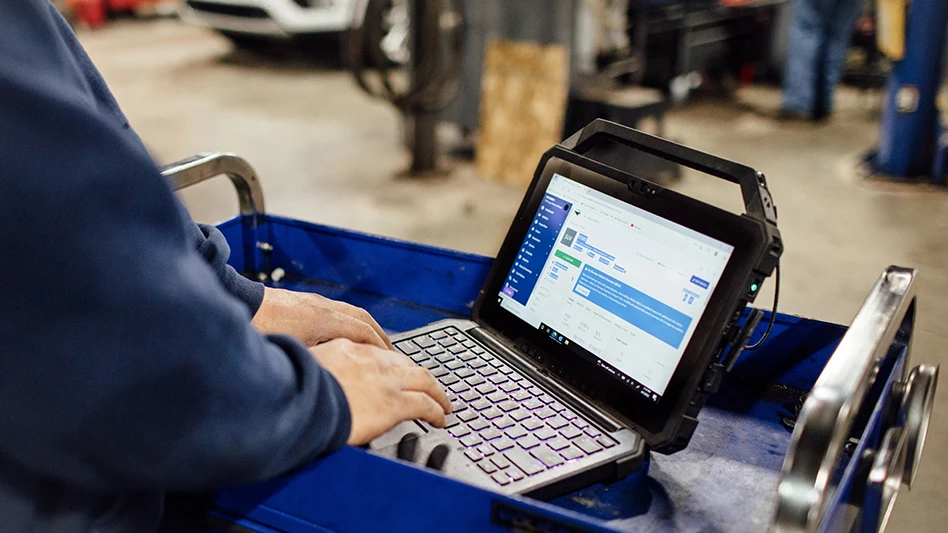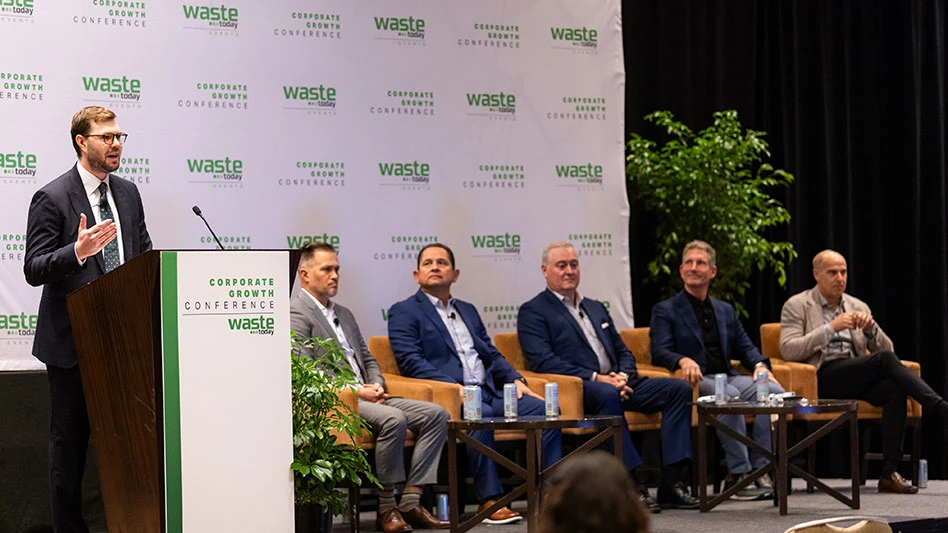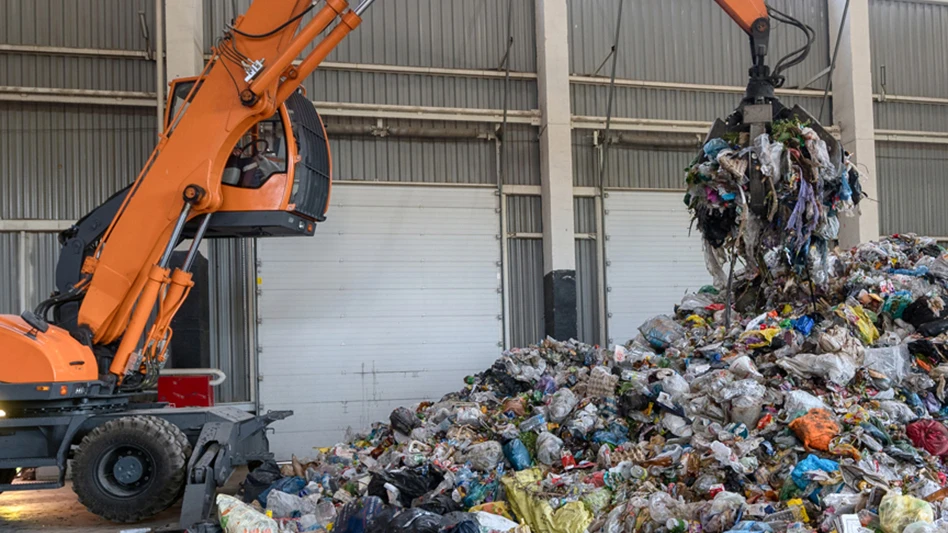
In the waste management industry, the efficiency of your fleet is crucial to maintaining smooth operations and controlling costs. Managing a fleet of garbage trucks and other waste management vehicles presents unique challenges, from managing heavy-duty equipment to optimizing routes for maximum efficiency. The 2024 Fleet Benchmarking Report offers valuable insights tailored to waste management fleets, helping you assess your performance against industry standards and identify opportunities for improvement.
Why Fleet Data Matters in Waste Management
Data-driven decision-making is essential in waste management. With accurate and comprehensive fleet data, you can answer critical questions such as:
● When is the best time to replace aging vehicles?
● Are our maintenance costs increasing unnecessarily?
● How much time are our vehicles spending in the shop versus on the road?
The 2024 Fleet Benchmarking Report compiles real-world data from Fleetio customers, providing a clear picture of how waste management fleets are performing. By benchmarking your operations against these metrics, you can make informed decisions that optimize your fleet’s performance and reduce costs.
Vehicle Age and Replacement Strategies for Waste Management Fleets
One of the key factors influencing the efficiency of a waste management fleet is the age of its vehicles. According to the report, nearly 45 percent of fleet vehicles are less than four years old, aligning with traditional retirement recommendations. For waste management vehicles however, which often need to last longer than four years while also enduring rigorous daily use, it’s important to do as much as possible to extend the life of your vehicles—while also still having a defined replacement schedule.
Time-Based Replacement
Pros: Provides a predictable schedule for replacing vehicles, allowing for better budgeting and planning. Helps avoid safety concerns associated with aging vehicles.
Cons: May lead to the premature replacement of low-mileage vehicles that are still in good condition, resulting in unnecessary expenses.
Mileage-Based Replacement
Pros: Ensures vehicles are utilized to their maximum potential before being replaced, optimizing their lifespan and reducing costs. Aligns replacement with actual wear and tear rather than just time.
Cons: Can be less predictable, as vehicles accumulate mileage at different rates depending on routes, usage patterns and other factors.
For waste management fleets, which often operate in harsh conditions, combining both time-based and mileage-based strategies might offer the best results. A Total Cost of Ownership (TCO) analysis can help you determine the most cost-effective time to replace vehicles, taking into account factors such as acquisition costs, fuel consumption, maintenance expenses and depreciation.
Controlling Costs: Tracking Cost Per Mile (CPM) in Waste Management
One of the most critical metrics for any fleet manager is the cost per mile (CPM) of operating vehicles. Unsurprisingly, CPM varies significantly across industries, with fleets in the utilities space being one of the most expensive at utilities $0.58/mile. Managing these costs effectively requires a deep understanding of the factors that influence CPM, such as fuel and maintenance expenses.
Key Cost Drivers for Waste Management Fleets
● Fuel Costs: Given the heavy-duty nature of waste management vehicles, fuel is a significant ongoing expense. Tracking fuel efficiency and optimizing routes can help reduce fuel consumption.
● Maintenance Costs: Waste management vehicles are subject to wear and tear due to the nature of their work. Regular preventive maintenance can help control these costs by catching potential issues early.
● Downtime: Every minute a vehicle spends in the shop is time it’s not out collecting waste, which directly impacts your bottom line. Reducing downtime through effective maintenance practices is crucial.
The report highlights how these costs change over time, with maintenance costs rising as vehicles age. Monitoring these expenses closely and benchmarking them against industry standards can help you identify when it’s time to invest in new equipment or adjust your maintenance strategy.
In-House vs. Third-Party Maintenance for Waste Management Fleets
Maintenance is a significant part of managing a waste management fleet, and how you handle it can have a big impact on your overall costs and vehicle uptime. The report discusses the benefits and drawbacks of both in-house and outsourced maintenance, providing insights that can help you decide which approach is best for your fleet.
In-House Maintenance
Pros: Greater control over maintenance schedules, direct oversight of costs and a deeper understanding of your fleet’s specific needs.
Cons: Requires significant investment in facilities, equipment and skilled labor. May lead to higher fixed costs.
Third-party Maintenance
Pros: Access to specialized expertise and the ability to shop around for the best prices. Can be more flexible in terms of scheduling and scalability.
Cons: Potentially less control over the quality and timing of repairs. May involve higher per-service costs and reduced visibility into the maintenance process.
For waste management fleets, a hybrid approach is often the most effective. Routine maintenance can be handled in-house, where your team is familiar with the vehicles and can manage day-to-day repairs efficiently. More complex or specialized repairs might be better outsourced to ensure the work is done to a high standard without disrupting your operations.
The Impact of Downtime on Waste Management Operations
Downtime is a critical issue in waste management, where keeping vehicles on the road is essential to meeting service commitments and maintaining customer satisfaction. As a fleet manager, it’s important to be able to communicate both hard and soft costs associated with vehicle downtime.
Hard Costs of Downtime
● Labor and Parts: Direct expenses incurred during repairs.
● Lost Revenue: Opportunities missed while vehicles are out of service.
● Additional Rentals: Costs associated with renting replacement vehicles to maintain service levels.
Soft Costs of Downtime
● Customer Dissatisfaction: Delays in waste collection can lead to customer complaints and damage to your company’s reputation.
● Increased Stress on Other Vehicles: As other vehicles take on more work to cover for those that are down, this can lead to accelerated wear and tear across your fleet.
Minimizing downtime requires a proactive approach, including regular preventive maintenance, efficient scheduling and quick access to repair services. By keeping a close eye on these factors and continuously refining your strategies, you can keep your waste management fleet running smoothly and your customers happy.
Benchmarking for Better Waste Management
By benchmarking your fleet against industry standards, you can identify areas where you excel and those that need improvement. Whether it’s refining your vehicle replacement strategy, managing costs per mile or choosing the right maintenance approach, these insights will guide you in making data-driven decisions that enhance your fleet’s performance.
Ready to optimize your waste management fleet? Download the full 2024 Fleet Benchmarking Report to access detailed industry benchmarks and get valuable insights that help you optimize your operations, control costs and reduce downtime.
About Fleetio
Fleetio is a fleet optimization platform that helps fleets run, repair and optimize their fleet vehicles. By implementing one platform to maintain your fleet assets, you’re able to manage inspections, work orders, PM schedules, parts inventory and more in a single dashboard. Fleetio finds the data in your everyday operations and turns it into powerful insights, so you can drive your fleet forward with confidence.
“The service support. Ease of use. Adaptability. Intuitive. Covers the bases. Reports are of great value. Maintenance cost and fuel use are down. Better communications over-all.” - Ross M., Santa Fe Solid Waste Management
See how Fleetio can optimize your waste management operations.
Latest from Waste Today
- CAA submits final draft program plan in Oregon
- Washington city adds organics collection to waste service
- Aspen Waste Systems expands into Denver-metro market
- NYSAR3 seeks respondents to commercial recycling survey
- Aemitis AD system goes online
- Liebherr breaks ground on logistics center
- Rubicon appoints new CFO
- Nexus W2V attracts funding for waste conversion project in Indiana





